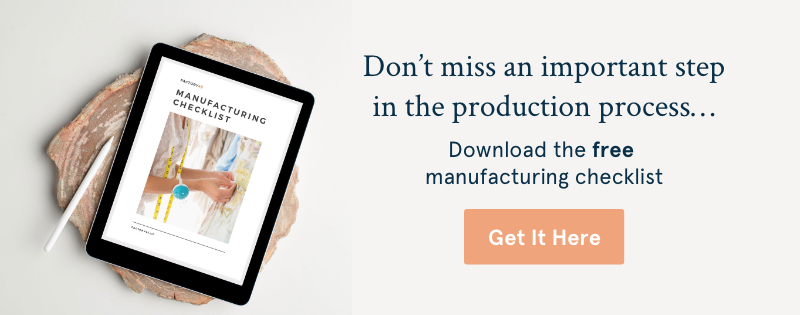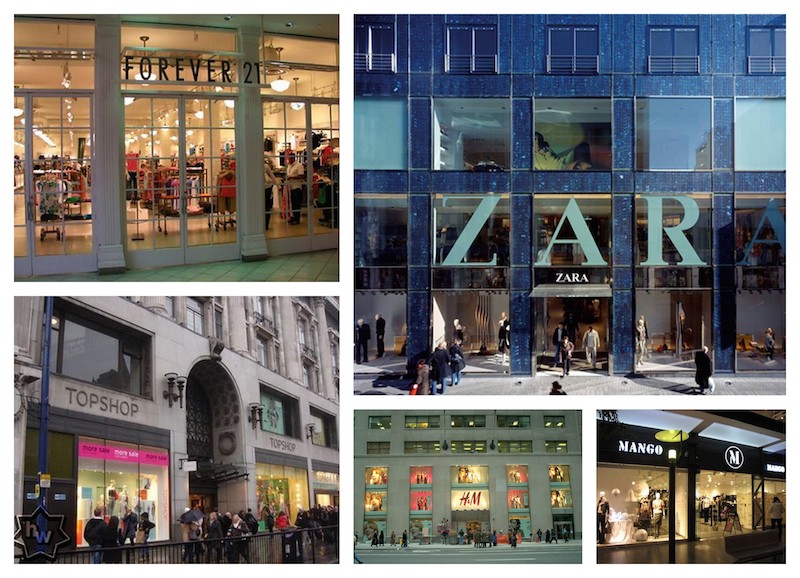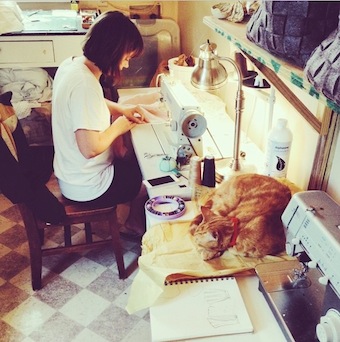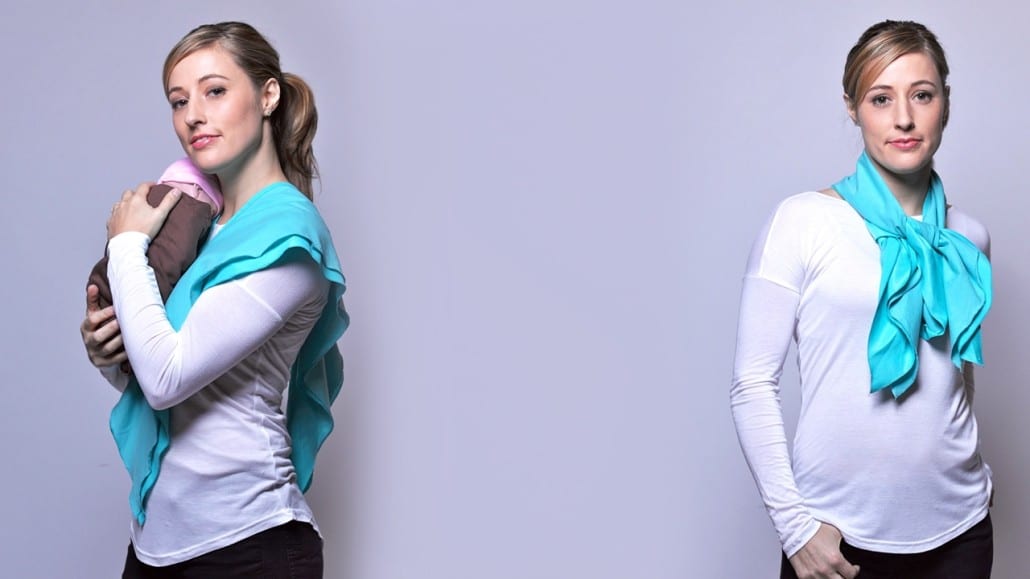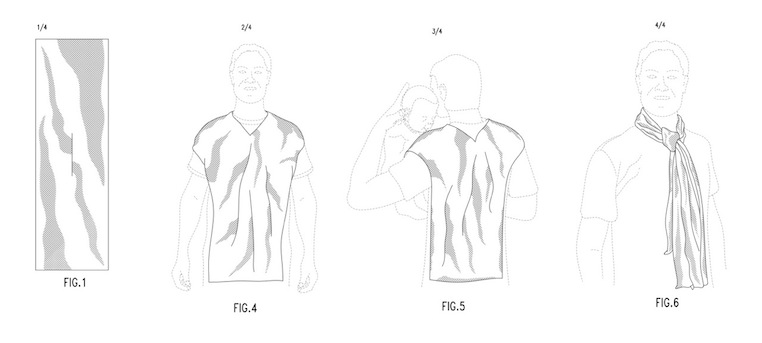The fast fashion industry gets a lot of flack these days. The excess, the overtly sexual advertising, the humanitarian issues, the waste, the lawsuits, the list goes on.
The industry giants have dedicated millions of dollars to massive PR campaigns, going so far as to launch “conscious collections” and donate proceeds to worthy causes. Yet despite these efforts, the truth remains — fashion is one of the dirtiest industries in the world. Here’s what they don’t want you to know:
1.) The fashion industry is designed to make you feel “out of trend” after one week.
Once upon a time, there were two fashion seasons: Spring/Summer and Fall/Winter. Fast forward to 2014 and the fashion industry is churning out 52 “micro-seasons” per year. With new trends coming out every week, the goal of fast fashion is for consumers to buy as many garments as possible, as quickly as possible.
According to Elizabeth Cline in her book Overdressed: The Shockingly High Cost of Cheap Fashion, fast-fashion merchandise is typically priced much lower than the competition, operating on a business model of low quality / high volume.
Cline points to the Spanish retailer Zara for pioneering the fast-fashion concept with new deliveries to its stores coming in twice per week. At the time of writing, she says H&M and Forever21 both get daily shipments of new styles, while Topshop introduces 400 styles a week on its website.
With designers creating new looks on a weekly basis, the fashion calendar for these companies is set up to deliberately make the customer feel off-trend after the first wear.
2.) “Discounts” aren’t really discounts.
The thriftiest fashionistas love the idea of going into an outlet store like TJ Maxx or Marshall’s and coming out with designer labels at a fraction of the price. Unfortunately, the “excess” or unsellable items we think we’re buying often have never seen a designer label before.
“Despite common belief, outlet clothing never enters a ‘regular’ store and is most likely produced in an entirely different factory than the ‘regular’ clothing,” writes Jay Hallstein in “The Myth of the Maxxinista.”
The reality is that outlets broker deals with designers so they can put designer labels on the cheaply made clothing manufactured in their own low-quality factories.
An article featured on Jezebel confirms: “The jig is up: Big brands like J. Crew, Gap and Saks’ Off 5th aren’t selling you discounted or out of season merchandise at their outlet locations. You’re just buying lower quality cardigans and patterned pants.”
3.) There is lead and hazardous chemicals on your clothing.
According to the Center for Environmental Health, Charlotte Russe, Wet Seal, Forever21 and other popular fast-fashion chains are still selling lead-contaminated purses, belts, and shoes above the legal amount, years after signing a settlement agreeing to limit the use of heavy metals in their products.
An article in The New York Times says the Center for Environmental Health is focusing on reducing the lead content in products marketed to young women because lead accumulation in bones can be released during pregnancy, potentially harming both mother and fetus.
Lead exposure has also been linked to higher rates of infertility in women and increased risks of heart attacks, strokes, and high blood pressure. Many scientists agree there is no “safe” level of lead exposure for anyone.
The lead contamination is all in addition to the pesticides, insecticides, formaldehyde, flame-retardants and other known carcinogens that reside on the clothes we wear.
4.) Clothing is designed to fall apart.
Fast fashion giants, such as H&M, Zara and Forever21, are concerned with the bottom line and the bottom line alone. Their business models are dependent on the consumers’ desire for new clothing to wear — which is instinctive if the clothing falls apart in one wash.
“A store like H&M produces hundreds of millions of garments per year,” author Elizabeth Cline says on NPR. “They put a small markup on the clothes and earn their profit out of selling an ocean of clothing.”
So why should we care? Because the average American throws away over 68 pounds of textiles per year. We’re not talking about clothing being donated to charity shops or sold to consignment stores, that 68 pounds of clothing is going directly into landfills. Because most of our clothing today is made with synthetic, petroleum-based fibers, it will take decades for these garments to decompose.
“You see some products and it’s just garbage. It’s just crap,” says Simon Collins, dean of fashion at Parsons The New School for Design, on NPR. “And you sort of fold it up and you think, yeah, you’re going to wear it Saturday night to your party — and then it’s literally going to fall apart.”
5.) Beading and sequins are an indication of child labor.
Industry estimates suggest that 20 to 60 percent of garment production is sewn at home by informal workers, according author Lucy Siegle in her book, To Die For: Is Fashion Wearing Out the World?
While there are machines that can apply sequins and beading that look like handiwork, they are very expensive and must be purchased by the garment factory. According to Siegle, it’s highly unlikely that an overseas factory would invest in the equipment, particularly if the clothing being made is for a value-driven fast-fashion label.
Carrying out her own investigation, Siegle learned that millions of desperate home-workers are hidden in some of the poorest regions of the world, “hunched over, stitching and embroidering the contents of the global wardrobe … in slums where a whole family can live in a single room.”
Often with the help of their children, the home workers sew as fast as they can and for as long as daylight allows to embellish and bedazzle the clothes that end up in our closets. Siegle goes on to say, “They live hand to mouth, presided over by middlemen, tyrannical go-betweens who hand over some of the lowest wages in the garment industry.”
So how can you become a more conscious consumer? It starts by educating yourself, buying local, buying less, buying used, and buying from independent designers. You can start by joining a growing movement of fashion changemakers here.
—
Originally published as a guest post on the Brooklyn Fashion + Design Accelerator blog.
[Photo credit: www.theretailnews.fr]

 Forest and Fin began back in 2009, when I first started screen-printing, moved onto a sailboat, and decided to become an artist. Back then, I didn’t have a clue what I was doing (you could still argue that’s true now! ), but I had the passion and desire to learn. In the beginning, I screenprinted my drawings of plants and animals onto tshirts, and you can still purchase them in my shop today. But Forest and Fin is undergoing an evolution. It’s adapting and growing; my mission and goals are becoming clearer. I’m an artist and a designer, not just a screenprinter. My screenprinted designs and apparel were the starting point and a way for me to support myself while I developed my art and business, but now I am branching into new products that better embrace my mission, a mission to help people spend more time outside.
Forest and Fin began back in 2009, when I first started screen-printing, moved onto a sailboat, and decided to become an artist. Back then, I didn’t have a clue what I was doing (you could still argue that’s true now! ), but I had the passion and desire to learn. In the beginning, I screenprinted my drawings of plants and animals onto tshirts, and you can still purchase them in my shop today. But Forest and Fin is undergoing an evolution. It’s adapting and growing; my mission and goals are becoming clearer. I’m an artist and a designer, not just a screenprinter. My screenprinted designs and apparel were the starting point and a way for me to support myself while I developed my art and business, but now I am branching into new products that better embrace my mission, a mission to help people spend more time outside.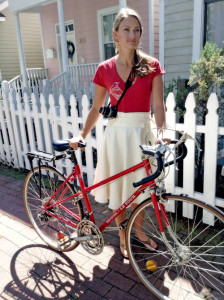 While I’m still in the early phases of product development, I have a prototype that works (really!) and I plan to document the rest of the journey here. I hope that you’ll join this discussion and weigh in on features of the design to help me streamline the perfect skirt. This is going to be a staple in my wardrobe (and maybe yours too!), so it needs to be durable, high quality, sustainable, classy, fun, and above all functional. I’ve put together a short survey with questions about design features, colors, pricing, etc. and would love for you (yes, you!) to weigh in on the design while I am still in the development stage. Your input will be essential in shaping the final outcome.
While I’m still in the early phases of product development, I have a prototype that works (really!) and I plan to document the rest of the journey here. I hope that you’ll join this discussion and weigh in on features of the design to help me streamline the perfect skirt. This is going to be a staple in my wardrobe (and maybe yours too!), so it needs to be durable, high quality, sustainable, classy, fun, and above all functional. I’ve put together a short survey with questions about design features, colors, pricing, etc. and would love for you (yes, you!) to weigh in on the design while I am still in the development stage. Your input will be essential in shaping the final outcome.
